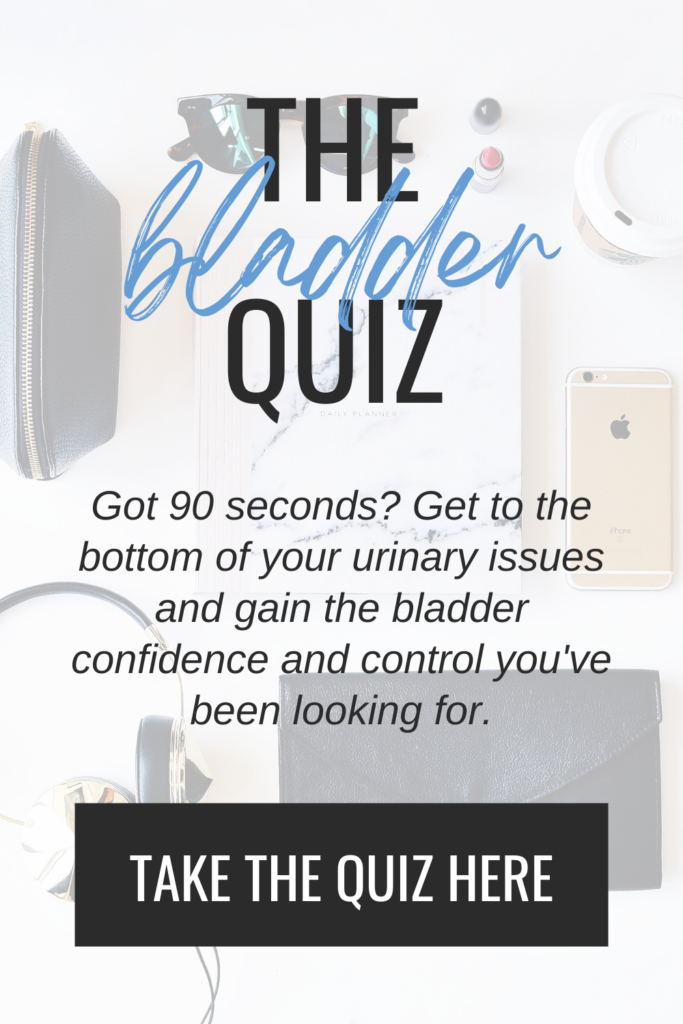Did I just admit to the world that I had hemorrhoids? Yes…yes I did.
And while this may be something most only share with their bestie via text from the toilet with a ~face palm emoji~ stamped at the end (yeeeeep, did that too), I’m convinced that this subject needs to be discussed if we’re going to take it beyond what to expect when you’re expecting and aaaaactually do something about it.
My birth and postpartum story involves a mama (yours truly) who did ALL. THE. THINGS. to prevent tearing with a vaginal birth- teas, vaginal stretches, relaxation techniques, pushing positions, and eating my body weight in dates to name a few. But I ended up with a third degree perineal tear requiring stitches from vagina to anus after a fast and furious labor that totaled 8 hours from start to finish. This resulted in pelvic pain (oh, the pain!), difficulty with intercourse, urine leakage, prolapse, and…hemorrhoids.
Now when I say hemorrhoids, I don’t mean the annoying little skin tags that can occur on the outside of the anus…although I did get those too. I’m talking about dripping blood in the toilet during every bowel movement, sharp and stinging pain with each push, and the feeling of rectal pressure and heaviness after every bathroom trip. This lasted for months and got so bad that I scheduled a general surgery consult for further assessment.
After hearing my options that left me less than impressed, I decided to take matters into my own hands and address my hemorrhoids with the same pelvic rehab techniques I teach my patients. Why I didn’t do that in the first place???…I don’t know (insert yet another ~face palm emoji~ here). But within a week I was starting to see improvement, and after a month my hemorrhoids and all of the less than ideal side effects were gone.
If you’re still with me, then “no such thing as TMI” miiiiight be a motto you prescribe to as well. There’s no doubt I’m feeling a little vulnerable here, but let me be clear- if sharing my poop probs on the internet means just one woman finds the answers she’s looking for, then consider me an open book! Someone’s gotta do it, and I’m willing to take one for the team in the name of pelvic floor health and healing.
There’s obviously no secrets here, so keep reading to get the exact, no holds back steps I followed to heal my hemorrhoids for good.
Stay regular.
Postpartum constipation is definitely a thing (thank you, hormones), and not going regularly can naturally lead to hard stool that’s inevitably more difficult to pass. In order to stop “re-opening” my hemorrhoids, I needed to make daily poops a reality.
So I put myself on a schedule.
Praise be, our bodies are creatures of habit, and doing the same routine at the same time every day made morning trips to the bathroom a regular thing. Here’s a look at my schedule-
4:30 AM– wake up + pump
- Pumping had nothing to do with my bowel schedule, it’s just when I produced the most breast milk, so I would get up early to work on my freezer stash.
- Start this routine whatever time of day works best for you. I recommend going with a time that you “normally” poop if you have one, or if there’s a time that’s more convenient for you.
4:50 AM– drink big ol’ glass of “Fancy Water”
- “Fancy Water” Recipe”
- 8-16 oz room temperature water
- generous squeeze of lemon (for digestion)
- pinch of pink Himalayan or sea salt (for electrolyte balance)
- 1 tsp chia seeds (for fiber_
- Bonus if you put it in a cute glass to make it more fun
4:55 AM– drink a warm beverage of choice (usually coffee, tea, or bone broth for me) and eat a little something high in fiber
- Nuts, berries, and/or oatmeal were my go-to’s
5:00 AM– move
- This often included a few minutes of gentle stretching and/or yoga on my kitchen floor
5:05 AM– abdominal massage to get the bowels moving
5:10 AM– sit on the toilet
- Do this every day at the same time whether you have to go or not
- If you have the urge to go…go!
- If you don’t have the urge, sit there for 3-5 minutes, then get up and move on with your day
Soft poops.
Not only is going regularly an important step in decreasing hemorrhoids, but getting a stool consistency that’s easy to pass plays an equally essential role. While you can use stool softeners, I prefer to take a more natural approach by drinking plenty of water and eating foods that help move the digestive system along.
When it comes to water, I recommend drinking half of your body weight (in pounds) in ounces of water. If you’re breastfeeding, working out rigorously, or living at higher altitudes, more like two thirds of body weight is ideal.
As far as food, everyone’s body responds differently based on your gut health and food tolerances, but my typical choices included-
- Ripe banana
- Yogurt
- Bone broth
Making sure to have at least one stool-softening food at every meal can really add up for the better, and is an easy way to make your poops the perfect consistency for pain-free passing.
Squatty potty.
If you’ve been around here for a while, then you know I consider the squatty potty a MUST for a healthy pelvic floor. In order to push poop out with ease, the position of feet resting on a stool, knees higher than hips, and elbows resting on knees is the only way to un-kink the colon.
Once you’re set up with a squatty potty (you can find my go-to recommendation here, or my #treatyourself pick here), there’s a specific sequence to pushing properly and putting pressure in all the right places. I have a FREE GUIDE on how to poop, and you can find all of the above here.
Remove distractions.
While the bathroom may seem like the perfect place to catch up on a chapter of your book or scroll through the latest on social, the last thing you should be doing is taking your mind off of the task at hand if you’re having bowel issues. Yes mamas…this even includes the little ones climbing on your lap or sliding their fingers under the door (I highly recommend a game plan to include a pack-n-play or highchair if you need to keep the kiddos safe while taking a little you-time in the bathroom).
There’s a right way to sit, right way to posture, and right way to push to set yourself up for success, and thinking about anything other than those things is just not ideal.
Pelvic floor relaxing.
Believe it or not, tight pelvic floor muscles are a common cause of constipation and hemorrhoids, whether you’re postpartum or not. Stress, chronic pain, and prolonged sitting are the more popular of many causes behind pelvic floor tightness, and I’m personally prone to this because of my endometriosis history and perineal tearing.
Being able to tune into your pelvic floor muscles and actually relax them can be kind of tricky, but I’ve found a sure-fire way to make it happen that’s a must on the toilet.
I call it the “mini kegel, let it go” and I’m breaking it down for you here-
1. Perform a mini kegel (or pelvic floor contraction). This isn’t the biggest or strongest kegel you’ve ever done, rather turning the muscles on just enough to feel it.
2. Let the kegel go and try to let your pelvic floor relax as far down as possible without pushing. If you feel like your muscles are lower, loser, or more open, you’ve done it correctly.
I started performing this after I was in the perfect position and right before I started pushing to make sure I wasn’t working against any unnecessary tension, and it made all the difference.
Exercise modification.
Exercising in ways that increased the pressure on my pelvic floor before I was ready (read heavy lifting, jumping, and advanced core work) was putting stress on my rectum and hemorrhoids when I wasn’t even on the toilet. Scaling back my workout routine was by far the hardest thing for me to follow, but once I actually heeded this advice my hemorrhoids started to improve within days.
I knew these exercises were a contributing culprit when I got rectal heaviness and pain after these specific movements and when I realized my symptoms were worse the days I was more aggressive in the gym.
The societal pressure to get my body “back” and personal drive to return to my pre-baby performance definitely contributed to this push, but once I realized that I was taking two steps forward in the gym and one to two steps back in the bathroom, I had to make a change. And let me tell ya…taking those few weeks to scale back in the gym made all the difference.
–
It’s been three months since I dealt with my hemorrhoids, yet I can still remember texting the same friend who fielded my hemorrhoid complaint in the first place saying “I don’t have anymore bleeding!” and feeling so proud of myself.
Hemorrhoids after childbirth are as common as can be. But common does not mean normal, and the thought of dealing with poop probs while owning the messy and magical title of mama seems like an unnecessary evil when there really are easy steps to addressing the issue.
I can’t wait for you to try these strategies and see a little healing yourself. And when you’re on the receiving end of those “OMG, these hemorrhoids!” text, you’ll be able to reply with “girl…I got you”.
Disclosure: Some of the links above are affiliate links, meaning at no additional cost to you, I will earn a commission if you click through and make a purchase. No pressure, but I have a feeling you’re gonna like what I’ve taken the time to put my recommendation behind.
















